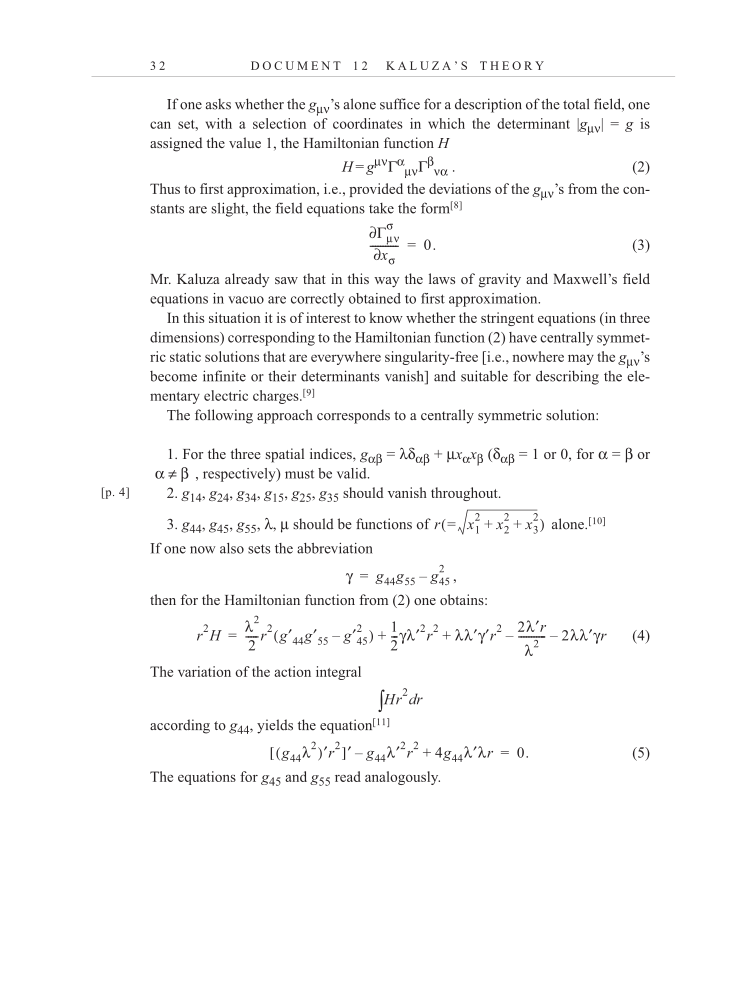3 2 D O C U M E N T 1 2 K A L U Z A ’ S T H E O R Y If one asks whether the gμν’s alone suffice for a description of the total field, one can set, with a selection of coordinates in which the determinant |gμν| = g is assigned the value 1, the Hamiltonian function H H = gμνΓαμνΓβνα . (2) Thus to first approximation, i.e., provided the deviations of the gμν’s from the con- stants are slight, the field equations take the form[8] (3) Mr. Kaluza already saw that in this way the laws of gravity and Maxwell’s field equations in vacuo are correctly obtained to first approximation. In this situation it is of interest to know whether the stringent equations (in three dimensions) corresponding to the Hamiltonian function (2) have centrally symmet- ric static solutions that are everywhere singularity-free [i.e., nowhere may the gμν’s become infinite or their determinants vanish] and suitable for describing the ele- mentary electric charges.[9] The following approach corresponds to a centrally symmetric solution: 1. For the three spatial indices, gαβ = λδαβ + μxαxβ (δαβ = 1 or 0, for α = β or , respectively) must be valid. 2. g14, g24, g34, g15, g25, g35 should vanish throughout. 3. g44, g45, g55, λ, μ should be functions of alone.[10] If one now also sets the abbreviation , then for the Hamiltonian function from (2) one obtains: (4) The variation of the action integral according to g44, yields the equation[11] (5) The equations for g45 and g55 read analogously. σ ∂Γμν ∂xσ ----------- 0. = α β ≠ [p. 4] r( = x1 2 x2 2 x3) 2 + + γ g44g55 g45 2 –= r2H λ2 2 -----r2( g′44g′55 g′45) 2 – 1 2 --γλ′2r2 - λλ′γ′r2 2λ′r λ2 ---------- - – 2λλ′γr – + + = Hr2 rd g44λ2)′r2]′ ( [ g44λ′2r2 – 4g44λ′λr + 0. =
